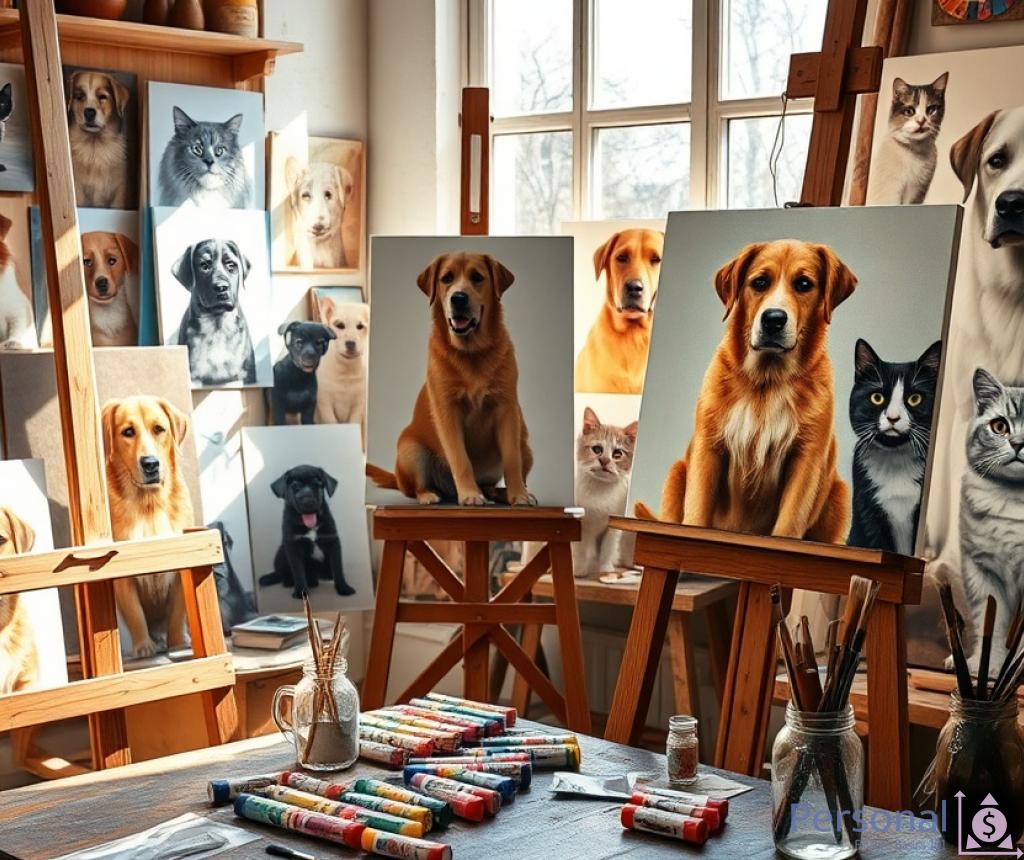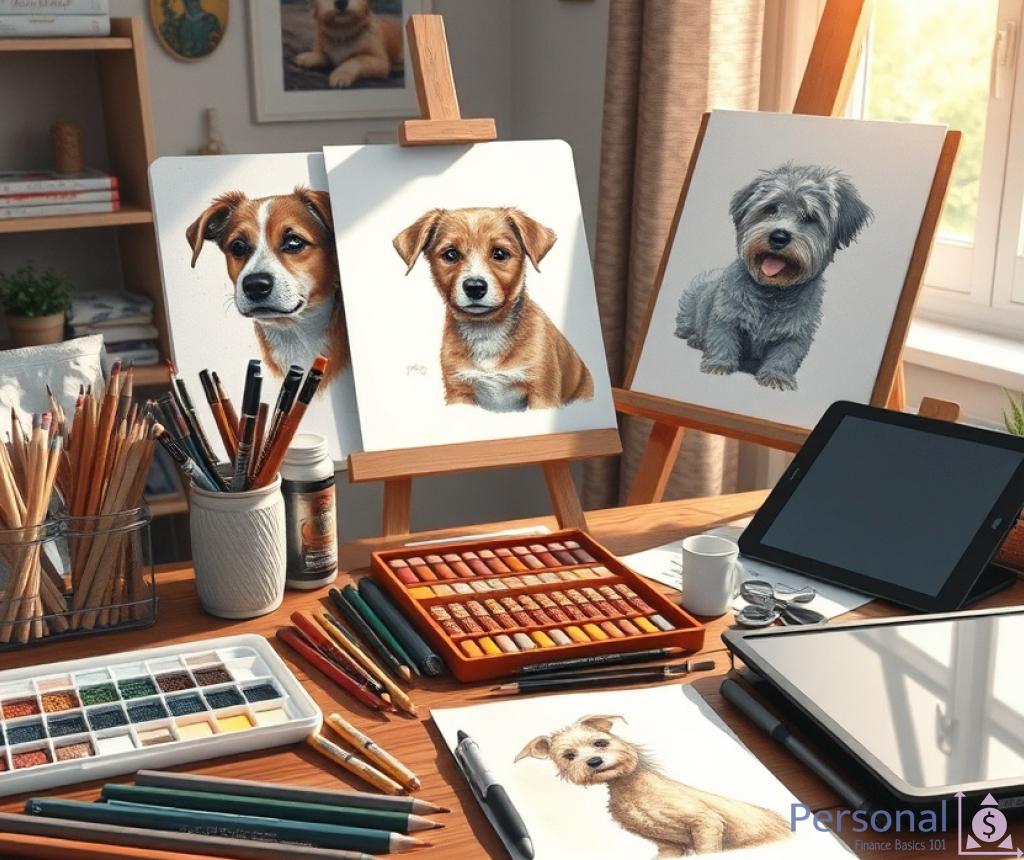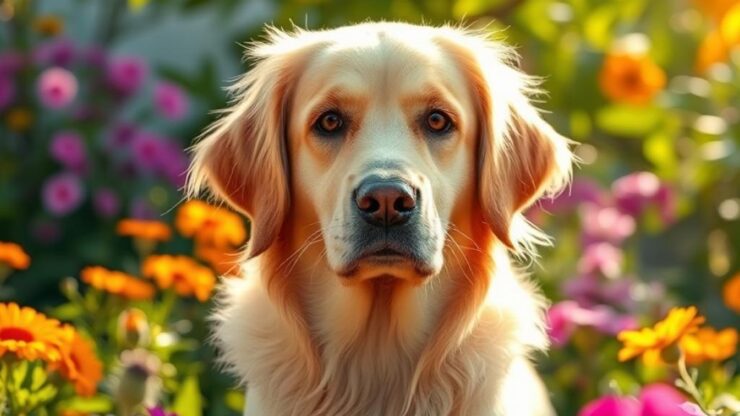The Artistic Process of Creating Pet Portraits

Before putting brush to canvas, the first step in creating a captivating pet portrait is to understand the essence of the animal you are illustrating. This involves observing their unique characteristics, such as their personality traits, physical features, and expressions. Capturing these qualities is essential, as they form the foundation of a portrait that resonates with pet owners.
Spend time with the pet, take notes on their behavior, and snap photographs from various angles to gather the necessary references. This initial phase is crucial, as it sets the tone for the entire artistic endeavor.
Once you have a solid understanding of your subject, it’s time to bring your vision to life. The choice of medium—be it watercolor, acrylic, or digital illustration—plays a significant role in the outcome of your artwork. Each medium has its unique attributes that can enhance the portrayal of your subject.
Below is a comparison of common mediums used in pet portrait art:
| Medium | Characteristics | Best For |
|---|---|---|
| Watercolor | Soft, translucent layers; excellent for fur texture | Capturing delicate features and light |
| Acrylic | Vibrant colors; dries quickly | Bold, detailed work with rich colors |
| Digital | Endless editing possibilities; can mimic traditional styles | Versatile styles and easy sharing |
Each technique requires practice and experimentation. Whether you prefer the fluidity of watercolor or the vibrancy of acrylics, mastering your chosen medium is key to creating stunning pet portraits that your clients will cherish.
The final stage in the artistic process of creating pet portraits involves personalization and presentation. This is where you can truly make the piece special for the pet owner. Consider adding elements that reflect the pet’s personality or their favorite activities, such as toys or landscapes they love.
Additionally, the presentation of the artwork can enhance its appeal. Options include framing, matting, or even offering prints. Investing time in how the portrait is showcased can significantly elevate its perceived value, making it a treasured keepsake for the pet owner.
Marketing Strategies for Your Pet Portrait Business

Establishing a distinct brand identity is paramount to attracting clients in the competitive market of pet portrait art. Your brand should reflect your artistic style and connect emotionally with pet owners. Think about what sets your work apart, whether it’s your technique, your unique interpretation of pets, or your personal story. This connection helps potential clients see the value in your art and fosters loyalty.
Here are some essential elements to consider when crafting your brand:
- Visual Identity: Develop a consistent visual theme across your artwork, website, and social media that resonates with your target audience.
- Storytelling: Share your journey and passion for pet portraiture through engaging narratives that showcase your dedication and love for animals.
- Customer Engagement: Create a welcoming atmosphere in your communications where potential clients feel valued and understood.
- Quality Assurance: Ensure that every piece reflects your highest standards to build trust and satisfaction among your clientele.
In today’s digital age, social media serves as a powerful platform for promoting your pet portrait business. It allows you to showcase your art to a broader audience while fostering a community around your passion for pets. Engaging with pet owners online can translate into increased visibility and sales.
Here are effective social media strategies to enhance your reach:
- Visual Content: Utilize high-quality images of your portraits, behind-the-scenes processes, and videos that capture your artistic journey.
- Engagement: Regularly interact with your followers through comments, polls, and Q&A sessions to create a vibrant community.
- Hashtags and Trends: Use relevant hashtags to increase discoverability and participate in trending topics related to pets and art.
- Collaborations: Partner with pet influencers or local businesses to tap into their audiences and broaden your reach.
Fostering strong relationships with clients is crucial for the longevity of your pet portrait business. Happy clients are more likely to return for future commissions and recommend your services to others. Establishing a personal connection will keep your clientele engaged and satisfied.
Here are some strategies to build lasting client relationships:
- Personalized Communication: Make every interaction meaningful by addressing clients by name and acknowledging their specific requests and preferences.
- Follow-Up: After completing a portrait, reach out to clients to gather feedback and express gratitude for their support.
- Special Offers: Consider loyalty programs or discounts for repeat clients to incentivize their return.
- Client Showcases: Share portraits of their pets on your social media, tagging them to create a sense of community and appreciation.
Choosing the Right Medium for Animal Illustrations

Choosing the appropriate medium for animal illustrations is a vital step in the artistic journey of creating pet portraits. The right medium can not only enhance the visual appeal of the artwork but also convey the emotional connection that pet owners have with their beloved companions. With a variety of options available, understanding the strengths and characteristics of each medium can guide artists in making informed decisions that align with their artistic vision and the preferences of their clients.
When it comes to pet portraits, each medium offers distinct advantages and can evoke different emotions through its application. Here’s a closer look at some popular choices and their unique attributes:
- Oil Paint: Renowned for its richness and depth of color, oil paint allows for intricate layering and blending, making it ideal for capturing the subtleties of fur and expression.
- Pastel: Soft pastels produce vibrant, textured illustrations, perfect for showcasing the whimsical and playful nature of pets. Their ease of blending allows for soft transitions that can capture the essence of an animal’s fur.
- Colored Pencils: This medium offers precision and detail, allowing artists to create finely detailed portraits that highlight the unique features of each animal.
- Digital Illustration: With the versatility of digital tools, artists can experiment with styles and effects that mimic traditional mediums while offering endless possibilities for edits and enhancements.
While the choice of medium is largely subjective, several factors should be taken into account to ensure the final artwork meets both the artist’s and the client’s expectations:
- Artistic Style: Consider which medium aligns best with your personal style. Whether you prefer realistic renditions or stylized interpretations, your choice should reflect your artistic identity.
- Client Preferences: Communicate with pet owners to understand their preferences regarding finishes and styles. Some may prefer the classic look of oils, while others might be drawn to the vibrancy of pastels or digital prints.
- Time and Cost: Different mediums require varying amounts of time and investment. Assess your workflow and budget to choose a medium that allows you to balance quality with efficiency.
Regardless of the medium chosen, mastery is key to creating captivating pet portraits that resonate with clients. Dedicate time to practice and experiment with different techniques within your selected medium. This not only enhances your skill set but also broadens your artistic repertoire, allowing you to adapt to diverse client requests and preferences.
Building Client Relationships in the Pet Portrait Industry
In the vibrant world of pet portrait art, the relationships you cultivate with your clients can make all the difference. These connections not only enhance the personal experience for pet owners but also create a loyal customer base that will return for future commissions. To thrive in this niche market, it’s essential to focus on building strong, sincere relationships with your clients, transforming them into advocates for your art.
Understanding Client Needs is the cornerstone of any successful relationship. Every pet owner has a unique story and connection with their animal companion. Take the time to actively listen to their desires and preferences, as this will enable you to create a portrait that resonates deeply with them. By asking thoughtful questions and discussing their vision for the artwork, you demonstrate that you genuinely care about capturing the essence of their beloved pet.
Moreover, personalized service can set you apart in a competitive market. Tailor your communication style to fit each client’s personality, whether they prefer formal updates or casual chats. Make it a point to remember details about their pets, such as quirks or favorite toys, and incorporate these elements into your conversations. This thoughtful approach fosters a sense of community and trust, encouraging clients to return for future projects.
Engagement is a vital aspect of maintaining relationships within the pet portrait industry. Clients are not just purchasing a piece of art; they are investing in a cherished memory that captures the spirit of their pet. To honor this investment, it’s crucial to keep communication lines open throughout the artistic process. Regular updates, progress photos, and insights into your creative journey allow clients to feel involved and excited about their order.
Additionally, consider post-commission follow-ups as a means to reinforce your commitment to client satisfaction. After delivering the final artwork, reach out to express your gratitude for their business and ask for feedback. This not only shows your dedication but also opens the door for constructive criticism that can enhance your future projects. A simple thank-you note or a small token of appreciation can leave a lasting impression.
Furthermore, community building is essential in nurturing client relationships. Encourage clients to share their portraits on social media, tagging you in their posts. This not only showcases your work but also creates a sense of belonging among pet owners. Consider organizing events or workshops where clients can come together, share stories, and celebrate their pets. These gatherings can strengthen community ties and position you as a go-to artist in the pet portrait space.
Expanding Your Reach: Online Platforms for Pet Portraits
In today’s digital landscape, the opportunities for pet portrait artists to showcase their work and reach potential clients have never been greater. Leveraging online platforms can significantly enhance your visibility and connect you with a larger audience of pet lovers eager for custom art that celebrates their companions. As you embark on this journey, understanding the various online spaces available will enable you to strategically position your pet portrait business.
Social media platforms serve as a vital tool for artists to engage with their audience and promote their work. By creating visually appealing profiles that reflect your artistic style, you can attract pet owners who resonate with your creations. Here are some prominent social media platforms to consider:
- Instagram: With its focus on visual content, Instagram is a haven for artists. Utilize high-quality images of your portraits, behind-the-scenes processes, and engaging stories to connect with your audience.
- Facebook: Create a business page to showcase your artwork, share client testimonials, and host events. Facebook Groups dedicated to pets and art can also help you reach niche communities.
- Pinterest: This platform allows you to share and organize your artwork into boards, making it easy for potential clients to discover your style and inspiration.
In addition to social media, having a dedicated website serves as a central hub for your pet portrait business. An online portfolio not only showcases your best work but also provides potential clients with essential information about your services and artistic process. A well-designed website can enhance your credibility and facilitate the following:
- Showcasing Work: Create a gallery of your pet portraits organized by categories (e.g., dog portraits, cat portraits, etc.) to help visitors navigate your offerings easily.
- Client Interaction: Include contact forms, booking options, and FAQs to streamline communication and make it easy for clients to engage with you.
- Blogging: Share insights about your artistic journey, tips for pet owners, and stories behind your portraits. This not only boosts your SEO but also establishes you as an authority in the pet portrait niche.
Online marketplaces have become increasingly popular for artists looking to sell their work. Platforms such as Etsy, Redbubble, and Fine Art America allow you to reach a broader audience while managing your sales efficiently. Here’s how to make the most of these platforms:
- Product Listings: Create detailed listings with high-quality images and engaging descriptions that highlight the uniqueness of your pet portraits.
- SEO Optimization: Use relevant keywords in your titles and descriptions to improve discoverability in search results.
- Customer Reviews: Encourage satisfied clients to leave reviews, as positive feedback enhances your credibility and attracts new customers.
By effectively utilizing these online platforms, you can expand your reach and build a thriving pet portrait business that resonates with animal lovers everywhere.
Disclaimer
This article has been created or edited with the support of artificial intelligence and is for informational purposes only. The information provided should not be considered investment advice. Please seek the support of a professional advisor before making any investment decisions.






